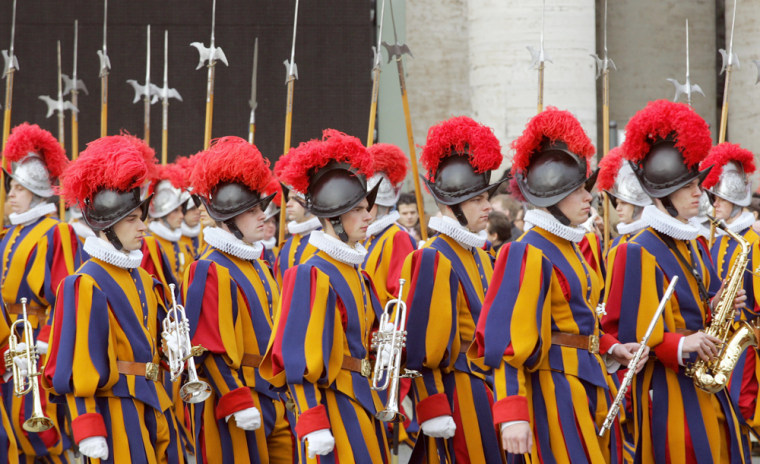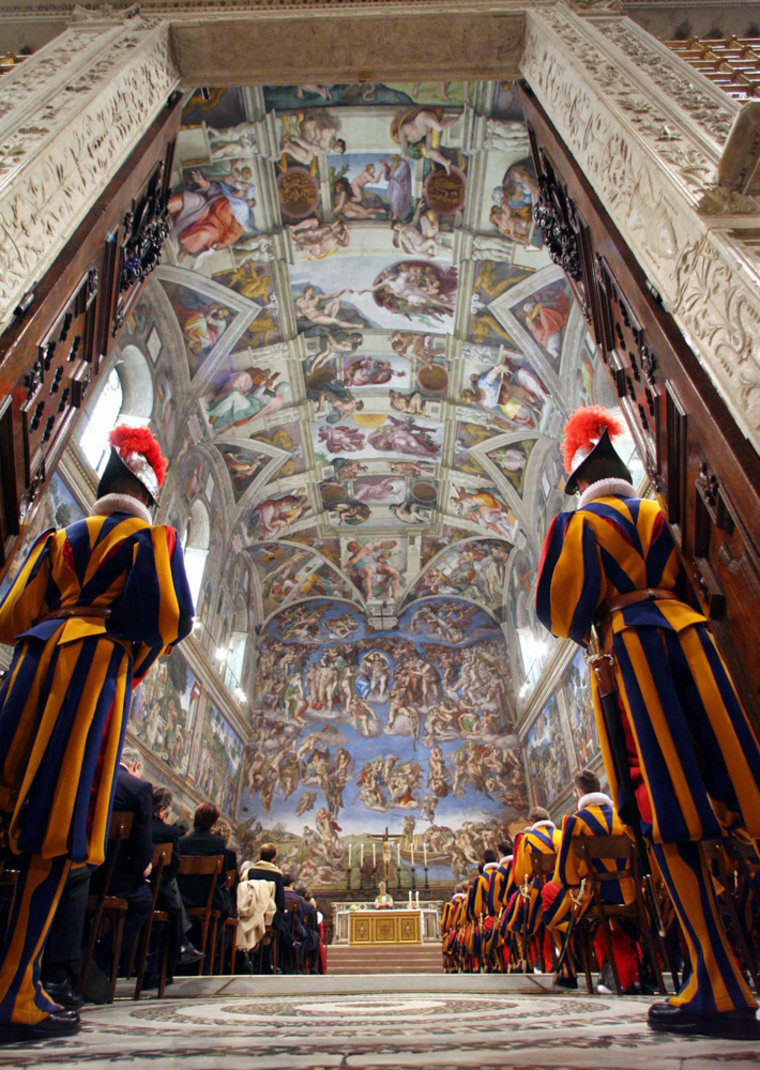Five hundreds years ago, mercenaries marched from Switzerland to Rome to aid Pope Julius II, and the Vatican is readying concerts, exhibits and celebrations to mark the half millennium of the Swiss Guards, who still protect the pontiff.
The Vatican No. 2, Cardinal Angelo Sodano, will celebrate Mass Sunday in the frescoed Sistine Chapel for current guards and their families, and afterward Pope Benedict XVI will offer a special blessing to an honor corps in St. Peter’s Square.
It is the launch of six months of commemorations in Italy and Switzerland that will culminate with a symbolic re-enactment of the march from Switzerland to Rome of the first 150 Swiss mercenaries to fight Pope Julius II’s temporal battles in 1506.
Pledged to protect the pope
The Swiss Guard commander, Col. Elmar Maeder, said this week that the work of the guards had changed over the past half-millennium, although their core mission to protect the pope remains.
“We swear to serve the pope, and if needed, to give even our lives to defend him,” Maeder told AP Television News. “And we are very well prepared to (do) that, spiritually also prepared.”
But he acknowledged that no one could guarantee the pope’s security — as shown by the 1981 assassination attempt on Pope John Paul II by Turkish gunman Mehmet Ali Agca in St. Peter’s Square.
Images of the attempt “remind me of my responsibility, but on the other hand I’m also convinced that it’s not possible for anybody to guarantee 100 percent security. That would mean that the pope could no longer be pope, that he could not shake hands with the people, meet the pilgrims coming to him,” Maeder said.
Centuries of change
While that mission remains, the current corps have “new technology, and we are probably no more those mercenaries as the Swiss were 500 years ago.”

The guards — outfitted in their trademark halberds, crimson-plumed helmets and gold and blue uniforms — provide ceremonial guard duty, assist at Vatican functions and help protect the pope. Some are armed with guns.
Last year, they had a special duty: stand guard outside the Sistine Chapel when cardinals elected former Cardinal Joseph Ratzinger pope.
“I was right outside the Sistine Chapel,” Maeder recalled. “I was probably the first civilian to congratulate him.”
After Sunday, the key dates in the upcoming celebrations include the 450-mile march by former guardsmen from the Swiss town of Bellinzona to Rome, starting April 7 and finishing in Rome on May 4.
A ceremony also will be held to mark the Sack of Rome in 1527, during which almost all the guards were massacred on the steps of St. Peter’s while trying to protect Pope Clement VII from the troops of Emperor Charles V.
The ceremonies officially end May 6, when the latest cadets are sworn in and take the oath to protect the pope.
Each recruit must have completed mandatory Swiss military service, be a Catholic between the ages of 19 and 30, have an impeccable reputation and agree to sign up for at least two years.
